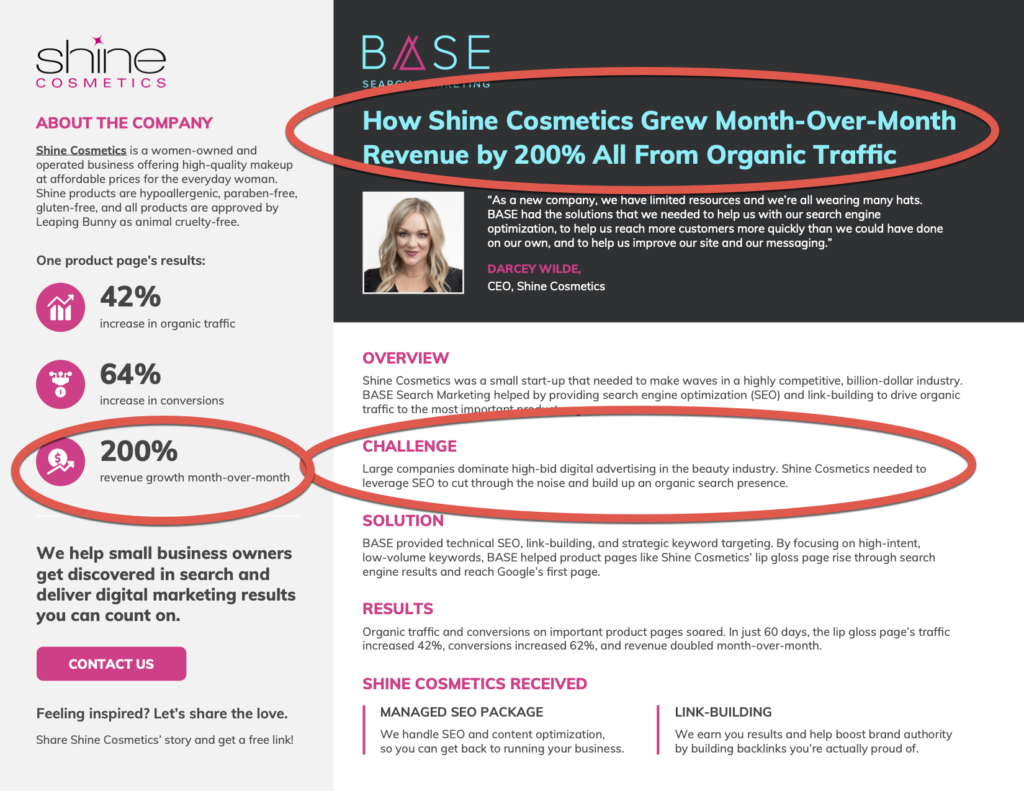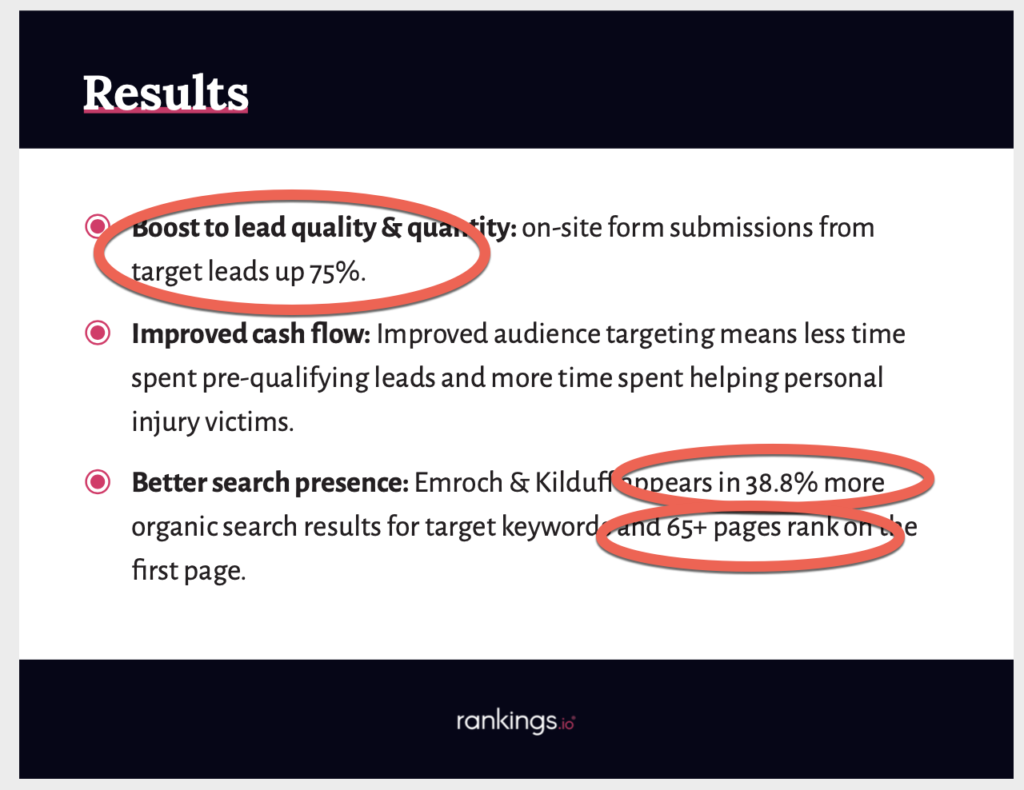When it comes to case study metrics, there’s something to be said for doing… less.
You wouldn’t put every spice in your spice rack into the same dish.
Because that mix of cinnamon, sage, fennel, tarragon, rosemary, and dill is going to taste BAD.
Likewise, you shouldn’t throw every success metric you have into a single case study—because it will make a confusing, unpalatable mess.
Customer success stories need to be focused
Customer success stories are most delectable when the outcome achieved ties directly to the problem experienced.
Sure, you can still mention a small number of complementary metrics in your case study that reinforce that outcome.
But if you try to emphasize every outcome and metric, you only make them all less compelling.
Just because your customer accomplished a lot of great things (with your help), that doesn’t mean every prospect will be equally interested in all of them.
Something has GOT to lead the way—or no prospect will want to take a bite.
Let’s look at three examples where we kept the story tight with a strong, clear link between the main challenge and the results.
Example 1: Wit Digital for CallRail
In this example, Wit Digital was spending lots of hours, and thousands of dollars, manually reviewing call transcripts to qualify inbound leads.
When CallRail implemented its Conversion Intelligence software to automatically review call transcripts, Wit Digital saved hours and thousands of dollars every month.
So, in our headline for this customer success story, we featured the jaw-dropping number of saving $4,000 a month:

We chose to feature this metric because it draws a straight line from the challenge to the end result.

Now, did our interview with WitDigital surface other impressive metrics? Quite likely.
But we chose to not include them in THIS study because they weren’t directly relevant to THIS story—the story CallRail wanted to tell.
We could, however, use other metrics (and even the same metrics) to tell different customer success stories that would appeal to different audiences with different challenges.
The goal is to make sure that EACH story is clean and pinpoint focused.
Example 2: Shine Cosmetics for BASE Search Marketing
Here’s another example, presented as a sales one-sheet (annotated):

As you can see in the circled “challenge” section, Shine Cosmetics was struggling to compete with large competitors in organic search results.
Then BASE Search Marketing provided the company with SEO and link-building services to drive more organic traffic.
So what success metric did we emphasize to keep this story tight?
We chose to zone in on the 200% month-over-month revenue growth from organic traffic—which we put in the headline and sidebar (circled in red above).
So again, we have a tight correlation between the challenge and the result:

In this case, we also included related metrics (42% increase in organic traffic and 64% increase in conversions) to provide additional support to the main metric of 200% revenue growth.
Example 3: Emroch and Kilduff for Rankings.io
Let’s look at a final example, drawing from a case study we completed for Rankings.io and their customer Emroch and Kilduff.
Similar to Shine Cosmetics, Emroch and Kilduff wanted to rank better in organic search to drive more leads.
So we put our focus on three related metrics:
- 75% increase in on-site form submissions (an indicator of new leads)
- 8% more organic search results for target keywords (more opportunities for new leads)
- 65+ pages ranking on the first page of Google search (ditto).
Once again, we have a tight challenge→results connection:

Here’s a screenshot from the slide deck we prepared for Rankings.io for this case study which really drives home these amazing results:

Again, we might have surfaced additional impressive results in our interview with Emroch and Kilduff.
But for this customer success story, we chose to focus only the metrics directly relevant to this story—and saved less-relevant ones to tell different stories for different audiences and pain points.
Stick to ONE Recipe at a Time
Resist the urge to put all of your amazing results and success metrics into ONE case study. Only use those that are directly relevant to the story you want to tell.
And if you have several additional points that are also worth exploring, try telling the same story several different ways—so you can then deploy the MOST relevant version to each lead.
When you do that, you’ll end up with a delectable selection of focused, pain-point-specific customer success stories that will entice your leads to tuck in.
Want to arm your sales and marketing teams with powerful stories and metrics?
Contact us to start the conversation.